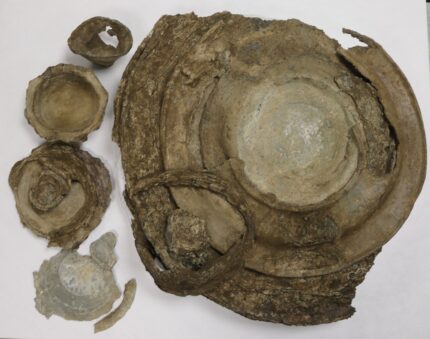 A rare hoard of Roman pewter has been discovered in Euston, western Suffolk. The hoard consists of a neat stack of plates and platters with smaller bowls and a cup placed atop and aside the nested platters. The metal is not dateable, but Roman pewter hoards in Britain usually date to the 4th century.
A rare hoard of Roman pewter has been discovered in Euston, western Suffolk. The hoard consists of a neat stack of plates and platters with smaller bowls and a cup placed atop and aside the nested platters. The metal is not dateable, but Roman pewter hoards in Britain usually date to the 4th century.
Faye Minter, Suffolk County Council’s Archaeological Archives and Projects Manager, said:
“This is a significant discovery. The larger plates and platters were used to allow food to be served communally and the octagonal bowls may have a Christian reference. Similar hoards are found across southern Britain, including from the nearby large Roman settlements at Icklingham and Hockwold.”
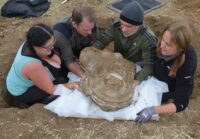
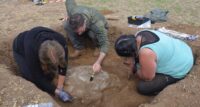 It was found by metal detectorist Martin White during a detecting rally on September 3rd, 2022. They alerted Suffolk County Council archaeologists who determined it was an assemblage in fragile condition that needed to be raised in a single group for separation and conservation in laboratory conditions. That was accomplished on September 20th.
It was found by metal detectorist Martin White during a detecting rally on September 3rd, 2022. They alerted Suffolk County Council archaeologists who determined it was an assemblage in fragile condition that needed to be raised in a single group for separation and conservation in laboratory conditions. That was accomplished on September 20th.
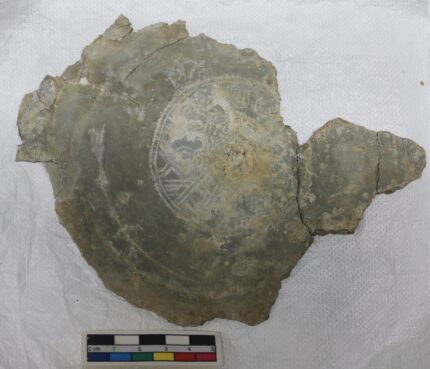 The group was excavated in the Norfolk Museum Services laboratory. There is evidence of heavy plough damage to the vessels, and advanced corrosion has fused several of them together.
The group was excavated in the Norfolk Museum Services laboratory. There is evidence of heavy plough damage to the vessels, and advanced corrosion has fused several of them together.
The main stack contained five plates and platters nested on top of each other. Corrosion materials make it impossible for the stack to be separated into its individual dishes. The top piece of the stack is fragmented and was partially lifted during the discovery process and so was conserved separately. It has a perforated decoration on the center — lines of punchmarks inside two concentric circles — which is rare in pewter.
Next to the plate stack was a group of three, one bowl on top of two small dishes, one of them decorated with a relief on the inside of the flat rim. A single inverted bowl was found on one side of the main plate stack. Two bowls with octagonal rims, also corroded together, were placed next to the plate stack, as was a single conical cup. The octagonal form may be a Christian reference
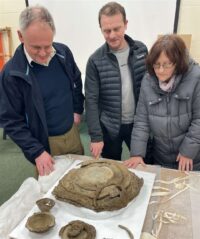 Because pewter is not a precious metal, this treasure of inestimable archaeological value does not qualify as official treasure (the wheels are Parliament are grinding excruciatingly slowly at closing this loophole) and therefore belongs to the property owner. It was found on the Euston Estate, making the Duke of Grafton the owner of the hoard. He has donated it to the West Stow Anglo-Saxon Village and Museum, near Bury St Edmunds. The conserved hoard is now on display there through January 2024.
Because pewter is not a precious metal, this treasure of inestimable archaeological value does not qualify as official treasure (the wheels are Parliament are grinding excruciatingly slowly at closing this loophole) and therefore belongs to the property owner. It was found on the Euston Estate, making the Duke of Grafton the owner of the hoard. He has donated it to the West Stow Anglo-Saxon Village and Museum, near Bury St Edmunds. The conserved hoard is now on display there through January 2024.